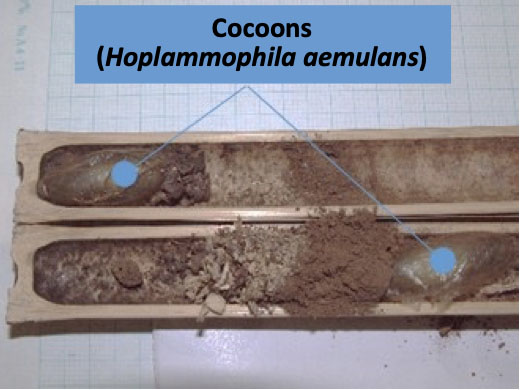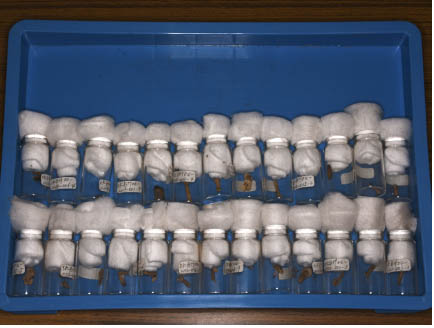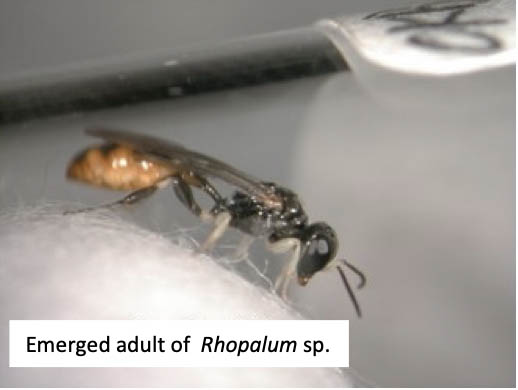Open the tubes of trap-nests in autumn or winter, and you can see (if you are lucky) the cocoons and pupae of bees.
Split the bamboo carefully so as not to kill immature insects inside. Pruning shears are useful, usually.
Record the interiors with photos and drawings.
|
|
|
Place the cocoons or pupae each in a small glass vial, plug the vial with a cotton ball, and keep them under outdoor conditions, but away from the wind and rain. Do not place them in a warm room where temperatures and humidities are quite different from the natural habitats.
Label each vial with the identification code of trap or tube from which the cocoon or pupa comes from.
|
|
|
In the following spring or summer, you can get adults that have emerged from the cocoon or pupa, and name it consulting this site or reference books.
In some cases, natural enemies emerge in place of bees or wasps. Don't be disappointed! They are also interesting creatures.
|
|





